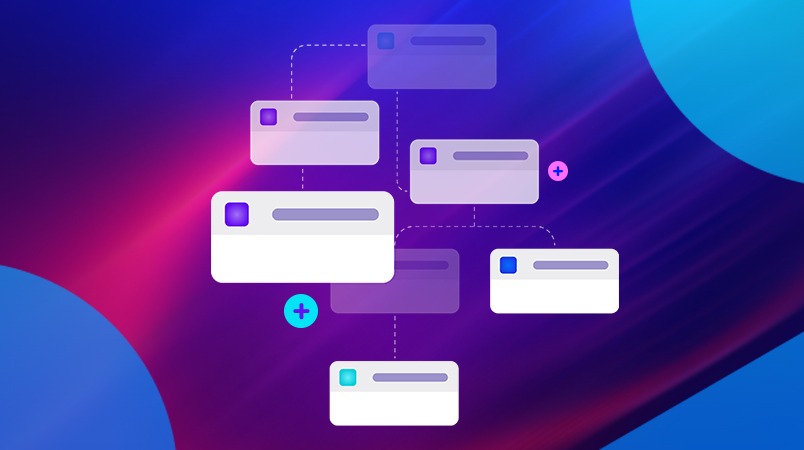This blog explores why investing in an AI platform is a strategic decision, what to consider when choosing one, and how different solutions compare. Ultimately, the choice of platform isn’t just about features, it’s about aligning technology with your organisation’s ambitions, agility, and governance needs.
Why AI in customer communication is a strategic choice
Customer communication has become a critical driver of business success, with customers expecting seamless, fast, and personalised interactions across multiple channels. Meeting these demands requires more than human effort; it calls for intelligent automation and omni-channel capabilities. AI platforms address these expectations while transforming customer service from a cost centre into a competitive advantage. By automating repetitive tasks and enabling teams to focus on high-value interactions, businesses can deliver tailored experiences that set them apart in the market.
In today’s fast-moving environment, agility is key. Traditional platforms often require months of implementation and significant IT resources, slowing down progress. Modern AI platforms, however, allow businesses to go live in weeks, experiment quickly, and scale as needed, making them essential for staying ahead in rapidly evolving industries. At the same time, innovation must be balanced with governance. While AI opens up new opportunities, it also raises questions about compliance, data management, and transparency. The right platform not only drives innovation but also ensures alignment with governance requirements, enabling businesses to move quickly without compromising security or accountability.
What to look for in an AI platform
Selecting an AI platform is not just a technical decision—it’s a strategic one. Here are the key factors to consider:
1. Agility and speed to market
In today’s fast-paced environment, businesses can’t afford to wait months for a platform to be implemented. Look for solutions that allow you to start small, experiment quickly, and scale as you see results.
2. Omni-channel capabilities
Customers interact with businesses across multiple channels email, chat, social media, voice, and more. A strong AI platform should unify these channels, providing a seamless experience for both customers and agents.
3. Ease of use and autonomy
The best platforms empower teams to build and optimise customer journeys without heavy reliance on IT. Low-code or no-code interfaces are particularly valuable for enabling non-technical teams to take ownership of the platform.
4. Scalability and cost alignment
Your platform should grow with your business, both in terms of functionality and cost. Look for solutions where costs scale with success, rather than creating budget pressures as you expand.
5. Governance and compliance
Data location, transparency, and compliance are critical considerations, especially for businesses operating in regulated industries. Ensure the platform aligns with your governance requirements.
6. Integration with existing ecosystems
If your organisation has already invested in a specific ecosystem, such as Salesforce, it may make sense to choose a platform that integrates seamlessly. However, for businesses seeking greater agility, standalone platforms that prioritise simplicity and speed may be a better fit.
Comparing leading AI platforms
To illustrate how these considerations play out in practice, let’s look at how different providers approach customer engagement:
Many providers in this sector offer broad omni-channel solutions, but their complexity and reliance on IT support often slow down implementation and reduce agility.
Others focus heavily on data integration and scalability, which works well for organisations deeply tied into those ecosystems. However, the high costs and heavy IT requirements can make them less accessible for businesses seeking speed and flexibility.
Some platforms are popular for live chat and customer engagement but often lack the advanced automation needed to support more comprehensive customer journeys.
HALO takes a different approach. It’s designed for agility and autonomy, with an intuitive interface, advanced AI-driven automation, and true omnichannel capabilities. HALO empowers teams to build customer journeys independently, without relying on IT resources. This makes it especially powerful for fast-moving industries that need to experiment quickly and scale efficiently.
The strategic questions to ask
When evaluating AI platforms, it’s important to move beyond feature comparisons and ask the bigger questions:
How quickly can we implement and start seeing results?
Does the platform align with our governance and compliance requirements?
Can we scale the platform as our business grows, without creating budget pressures?
Does the platform empower our teams to innovate without relying on IT?
How does the platform support the way we want to serve our customers and grow our business?
The answers to these questions will help you determine whether a platform is the right fit—not just for today, but for the future.
Technology as an extension of strategy
Choosing an AI platform is not just about selecting a tool—it’s about making a strategic decision that shapes how your organisation operates, innovates, and competes.
For businesses deeply embedded in traditional ecosystems, established platforms like Salesforce may make sense. But for companies seeking agility, speed, and autonomy, modern solutions like HALO offer a compelling alternative.
Ultimately, the right platform is the one that supports your vision for customer communication and aligns with your broader business strategy. The choice you make today will determine not only how efficiently your teams work tomorrow but also how competitive your business will be in the years to come.
Ready to explore how the right AI platform can transform your business? Discover how HALO can help you deliver exceptional customer experiences and drive growth.








